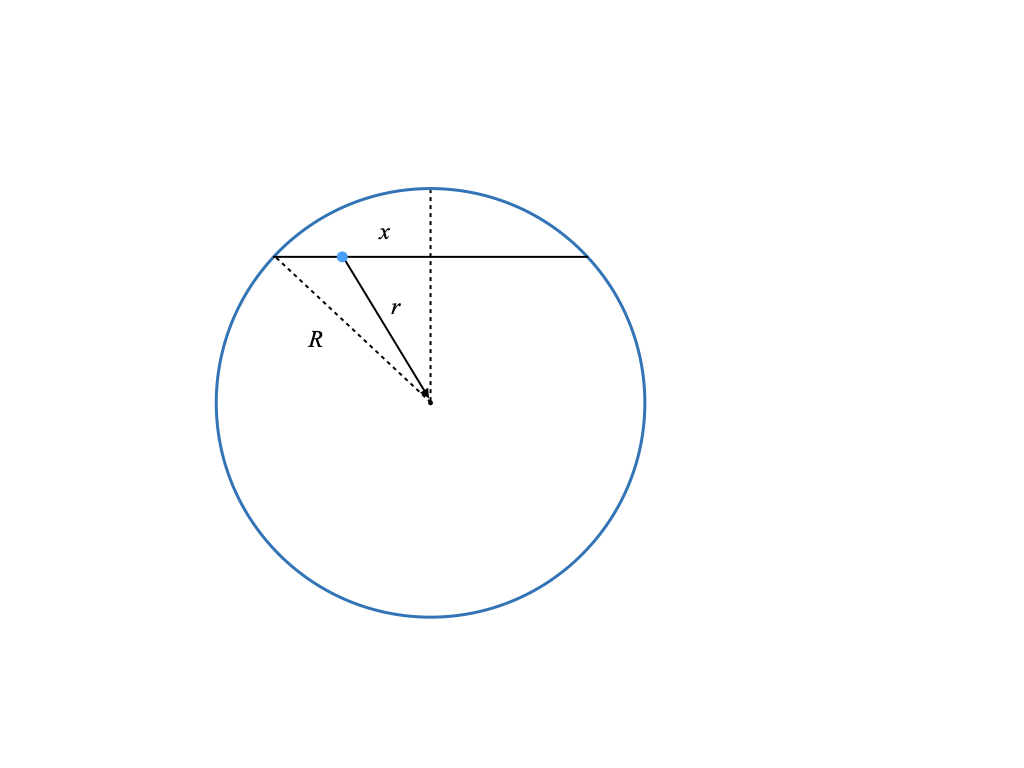In my previous post, I showed that an elevator falling from the surface through the center of the earth due to gravity alone would obey the dynamics of a simple harmonic oscillator. I did not know what would happen if the shaft went through some arbitrary chord through the earth. Rick Gerkin believed that it would take the same amount of time for all chords and it turns out that he is correct. The proof is very simple. Consider any chord (straight path) through the earth. Now take a plane and slice the earth through that chord and the center of the earth. This is always possible because it takes three points to specify a plane. Now looking perpendicular to the plane, you can always rotate the earth such that you see

Let the blue dot represent the elevator on this chord. It will fall towards the midpoint. The total force on the elevator is towards the center of the earth along the vector . From the previous post, we know that the gravitational acceleration is
. The force driving the elevator is along the chord and will have a magnitude that is given by
times the cosine of the angle between
and
. But this has magnitude exactly equal to
! Thus, the acceleration of the elevator along the chord is
and thus the equation of motion for the elevator is
, which will be true for all chords and is the same as what we derived before. Hence, it will take the same amount of time to transit the earth. This is a perfect example of how most problems are solved by conceptualizing them in the right way.